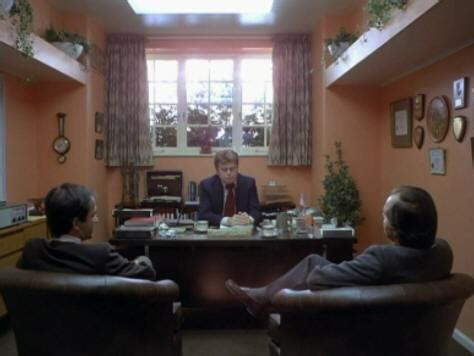
A hotel, bathed in blood, wrapped in a puzzle and stuffed up the keister of an enigma, The Shining relays the less-than-straightforward tale of a psychic boy helplessly trapped in a quagmire of perverted demons and murdered guests all wanting a fresh bite of whomever took the job of winter caretaker. That would be Jack Nicholson, and the boy’s hapless mother played by Shelly Duvall.
A psychic boy? Well, ‘Tony’ is the psychic, he’s the little boy that lives in the other little boy’s mouth and shows him things like, I dunno, a tsunami of blood gushing from the elevator bay, or, you know, chopped-up children…as any familiar spirit living in a little boy’s belly is wont to do. When meeting the Hotel’s cook (Scatman Crothers) Danny, the littlest tyke in the biggliest of haunted Colorado hotels, discovers that he, Dear Scatman, can communicate only with his mind, and Danny, being the same kind of special, can talk back. Scatman calls this power ‘the Shining’, and, he explains, just like people, places can ‘shine’, and boy-howdy will the Overlook Hotel shine its ass off.
The boy’s father is a tar-baby of character flaws the Hotel is just drooling, with jagged teeth, to exploit, for instance, he’s a physically abusive drunk who has already dislocated poor little Danny’s arm as a toddler. To keep Wendy from leaving him he swore off booze, problem fixed right?
Spooky Hotel hears ya’, Spooky Hotel don’t care…and yes, ‘the Hotel’ is a character, filled with memories and impressions of years and murders past. It has a will, a mission and a method and therefore is a classic antagonist. The Hotel incarnates itself through any poor bastard who stays there more than a weekend and slowly entwines him in invisible tendrils of bloodlust, like Mr. Grady, a previous caretaker, butchered his twin daughters when they, quite reasonably, tried to burn the place down.
Jack Nicholson goes full on Rasputin, writing a novel he won’t let anybody read and staring out of the snowy window at his family, his eyebrows like devil horns, with hungry rage.
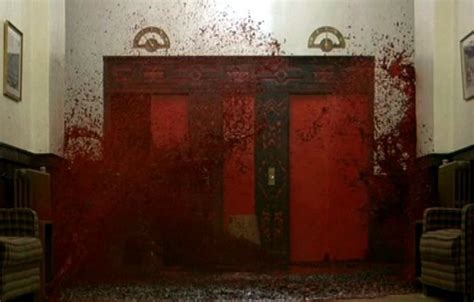
“Well, THERE’S your problem. Blood in your pipes, pressures all outta wack, gotya some demons. Jerry, I’m gonna need the big ladder, these old places…hey, where do I plug this in?”
The central focus of all this spiritual drama centers around a room on the second floor, Scatman warns Danny to never go in there…so, of course, he does. He resurfaces in the hotel lobby, sucking his thumb and bruised, scratched, percussed all over his body. Wendy, of course, blames her husband, then retracts that blame when she gets more out of Danny, “There’s a crazy woman in the Hotel with us, she attacked Danny!” When Jack goes in the room he sees a beautiful naked woman in the bathtub, inspiring his lust, as she kisses him, he looks in the mirror and sees she has transformed in a three-day old corpse, as he windmills away in terror she follows him, cackling.
“What was in the room?” Wendy asks.
Jack shrugs, “Nothing.”
Okay, what’s going on here, we’re left to ponder, and what’s going on is the Overlook has snagged Jack’s spiritual nuts. From here-on we are treated to the courting process by which the Hotel seduces and infiltrates a man, converting him into a murderous psychopath.
It wants to share, see, that’s all, it has a lovely tradition of dark sin and satanic gore to offer and these stuffy urbanites are too square to join in. Puritans.
But the Hotel gets its way, “Your son is a very willful boy,” it warns Jack concerning Danny’s ‘shining’, how the child “Is attempting to bring a third party into this situation,” meaning Danny’s been on the psychic red-line to Scatman, then living his off-season life in Miami. The Hotel delivers this warning in the person of Delbert Grady, the previous caretaker, long headless from a self-inflicted shotgun blast but now repurposed by the Hotel as a waiter in the Gold Room, surrounded by ghosts from the roaring 20s, at a shin-dig, we imagine, that is fondly remembered by the captive spirits of the hotel. It’s in this room that the seduction and infiltration is finalized via the spectral presence of ‘Lloyd’ the Gold Room bartender, appearing quite unexpectedly, just as Jack sits and says he’d sell his soul for just a glass of beer.
One beer Comin ‘up.
The last act is a harrowing series of attempts to escape Jack as he slashes and chops at the air with an axe, mother and son are soon separated, mother discovers the radio and the Snow-cat all-terrain vehicle have been sabotaged to stop their escape, Scatman flies from Miami to answer the boy’s plea for help and, shall we say, has a ‘split’ moment of regret. Through it all you can hear the pitiless Hotel laughing at the horror.
But that’s the surface movie, the retail plot, and it’s just fine on its own, terrifying in the extreme, but The Shining is not a retail film because Kubrick was never content to tell one story, or, shall I say, was never content to tell his real story on the surface.
There is a film-making note that should explain why this film is not believed for the surface story and why it inspires a gaggle of online prospectors to pan the stream for nuggets of narrative gold, and that is Kubrick said he wanted to confuse the audience. He disorients the viewer first, through the setting of the Overlook hotel. In one scene there is a bright window in an office, when we pass later, no window, in fact, if you go back and trace the back wall of the manager’s office you see there can be no sunlit window, as that wall was not an exterior wall and should be behind four tons of brick.

Caption: The aforementioned ‘Impossible Window’, other anomalies peppered throughout the film is: the Implausible Toilet, The Suspicious Ball of Yarn and the Unconvincing Toupee.
In one scene there is a chair behind Jack as he writes, cut to Wendy, cut back to Jack, no chair.
Okay, you say, a lot of movies have little mistakes that the director never catches…NOT IN A KUBRICK FILM. The guy does 99 takes of a gerbil burp, tears down the set, rebuilds it with one detail amiss and does another 99 takes. ‘Meticulous’ is the word. A chair, dead-center in the frame, did not escape Stanley Kubrick. Need more?
Naturally. Danny compulsively rides his three-wheeler around the floorplan, first floor, second floor, he turns, then he turns again, and in all of this your mind is trying to map the hotel. Was that the kitchen? But I thought that door opened into a hallway. Are those the blood gushing elevators, but no they were on the second floor, wait is he on the second floor, didn’t he just pass the office, the office wasn’t on the second floor, then where is the caretaker’s apartment…it should be right there! THIS! was intentional. By denying the audience a way to orient themselves within the hotel, the subliminal, moor-less feeling overpowers, it increases panic, as it always does when we can’t finger the exact spot where things should be. So, yes, that disappearing chair, that impossible window, it’s Kubrick’s head game to put you in fear, and it worked. None of this is assumption, it was all admitted to.
Okay, you say, he was a clever and puckish director, but what ‘other stories’ am I talking about?
Kubrick never stops at impossible windows. There are myriad different stories observed in The Shining, and most of these are Barnum-Forer effected and subjective, but instead of going through the thirty crazy theories I read I can safely say No, the whole thing was not Wendy’s fantasy…No, it had nothing at all to do with Nixon or Watergate…No, it’s not about Hollywood and NO! For Chrissakes! It is not a confession of Stanley Kubrick’s about how he helped fake the moon landing!
Jesus! Gah!
But, as clearly as I can tell, there were four legitimate subcutaneous narratives going on.
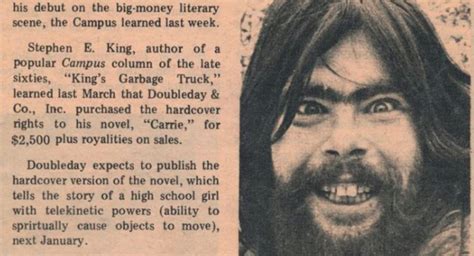
1981. Bangor police receive reports of a disturbed man, caked in his own filth, throwing crabapples at pedestrians while screaming “i didn’t write no creepy twins! I didn’t write no stupid hedge maze!” before dropping his pants and relieving himself in front of the library.
1. Jack Torrence wasn’t just a violent drunk, he was a child molester who molested Danny.
Hat tip to Rob Ager who is to Stanley Kubrick what Jean-François Champollion was to the Rosetta Stone. The need for Kubrick to tell this story subliminally goes back to Lolita, a story overtly about child molestation, the censors would not let Kubrick tell the story more viscerally so he had to rely on sly suggestions about the true nature of the piece, here he figured out how to suggest that this also is the story of child molestation, but revealed symbolically.
a) Playgirl in the lobby. In the first scene where Mr. Torrence is being interviewed for the caretaker’s job, he’s eating a sandwich and reading a magazine. The manager comes and introduces himself, Mr. Torrence stands, shakes hands and drops the magazine he was reading so intently on the chair. It’s only on screen for a flash, but long enough to make out the title and cover photo, some quick past-issue indexing reveals that the magazine Kubrick had Jack reading was Playgirl, the issue from January 1978 where the cover story was “Why parents molest their children.” This is real, this was the mag’s cover story for that month. If it didn’t mean anything, why would Kubrick go through years of past issues of Playgirl and then put that magazine in the lobby of a tourist hotel.
b) The Bear with the butt-flap down. Twice we see Danny closely associated with teddy bears, later, they are on the wall of his room at the Overlook, but before that, as we spy him talking to ‘tony’ in the bathroom he passes out and a doctor is called, we see him on a teddy bear bedspread with a teddy bear by his head.
In that scene this exchange takes place:
Doctor
Is Tony one of your animals?
Danny
No, Tony’s a little boy that lives in my mouth.
Doctor
If you were to open your mouth now, could I see Tony?
Danny
No.
Doctor
Why not?
Danny
Because he hides.
Doctor
Where does he go?
Danny
To my stomach.
Doctor
Does Tony ever tell you to do things?
Danny
I don’t wanna talk about Tony no more.
The next teddy bear we see? In the Overlook, on its knees, fellating a man with the rear flap of the costume down, these spirits look at Wendy through the open door who reacts as one might when one sees a ghost dressed as a Teddy Bear blowing a gent before he plows the bear’s back forty.
Adding to the fellatio theme, when Danny is abused by the lady in Room 237, he wanders into the lobby sucking his thumb. And just before that he stands from his tricycle and we see he’s wearing an Apollo 13 sweater, the phallic rocket aiming right at Danny’s mouth. (And there’s a dozen more, but you get it.)
2. “The wave of horror that swept over America” is the tagline for The Shining on it’s movie Poster, many believe this was a nod to an underlying narrative, the American Indians. This is a competent interpretation (if not historically accurate, the claim of Native genocide was first put forth by Howard Zinn using census data that recorded an 80% drop in Native population from 1600 to 1850 and he concluded genocide, debunked in full, the cause of the decline was intermarriage and disease, not genocide but…nope! I’m getting off the soapbox, Zinn and his Critical Theory is a serious bugaboo of mine, I’m off it) …it is however a reasonable analysis of Kubrick’s attempt at an under-narrative, for instance:
a) He makes a point that the hotel was built on an Indian burial site and they had to fend off Indian attacks when building it.
b) Indian pattern rugs and photos of stoic Indians festoon the walls of the Overlook hotel
c) When Wendy strikes Jack with the bat and he tumbles down the central staircase like an Aztec sacrifice.
d) to escape Jack in the snow, Danny backtracks Indian-style and hides himself leading Jack to follow a false trail.
e) On the drive north, Danny asks about the Donner Party and Jack answers while wearing a creepy grin
f) the score, especially during moments of horror, has a tribal screech motif running through it
g) Several instances of ‘Calumet Backing Soda’ cans displayed prominently behind the heads of characters. Calumet Baking Soda’s emblem is an Indian Chief in full headdress.
h) when ghost bartender Lloyd is pouring drinks, Jack refers to it as the White Man’s Burden, it might also be a reference to alcohol’s place in the despoiling of the Indians.
i) Wendy is blond in the novel, but Kubrick chose vaguely Indian-looking Shelly Duvall, who dresses in buckskin and Indian-themed gear most of the film.
3. It’s about the Holocaust.
Most people could see the American Indian angle, but what most didn’t see was the holocaust angle. Kubrick wrote a script called The Aryan Papers that was about the holocaust, a project that left him in a deep, dewy funk until he realized he couldn’t do it for the sake of his own mental health. Instead, the details absorbed during the pre-production of The Aryan Papers leaked into his later films, most notably the Shining.
a) Danny wears a jersey emblazoned with the number ’42’. The movie Danny is watching in the lobby is ‘The Summer of 42‘
Shelly Duvall swipes at Jack with her baseball bat 42 times (yeah, somebody actually bothered to count)
There are precisely 42 cars in the Overlook Hotel parking lot.
Dick Halloran is watching the news story about “42-million-dollar spending deal”. The ‘haunted room’ in the film (not the book) is Room 237: 2x3x7=42
SO, what in blazes is so significant about ’42?! It’s the year the holocaust started in full. It’s the year of the Wannsee Conference that formalized it, the number 42 has been shorthand for the holocaust ever since.
Need more?
b) Jack uses an Adler Eagle typewriter. A German machine and vintage, it was the typewriter that Nazis used to record the passengers on the trains. It is seen as a symbol of the industrial, ‘typeset’ and dispassionate precision of the German Holocaust.
Jack’s head rests on the typewriter as he dreams of killing his family, waking up in a cacophony of screams.
c) The painting Ararat, showing two naked, emaciated children hangs in the Torrence’s apartment and is associated with the Armenian Genocide, the very event Hitler used to justify his ambitions against his own country’s ethnic minority.

[knock, knock] “Housekeeping. Ju need de linen…? oh. iss de bishop! oh uh. well. I change later, I change later, see you Easter, padre…fun party they having….nice to meet, uh, bear-friend..I…I change later. jess..”
d) Grady spills advocaat on Jack leading to the bathroom scene. Advocaat is Polish. Advocaat is also only made in Poland, The Netherlands, Belgium, Germany and Austria, in other words, the Holy Roman Empire, in other words, the Lebensraum.
e) Bartok’s Music for Strings is used as the ‘evil’ music throughout the film, a subversive and political piece, it was written in 1936 as a description of the creeping horror of Nazism at a time when you couldn’t just come out and say that in words.
4. It’s about the Federal Reserve.
There was no ‘Gold Room’ in the novel, the grand ballroom where Jack sells his soul to the spectral ‘Lloyd’ and therefore the hotel. Kubrick’s personal wealth was largely in the form of gold, the Federal Reserve act, which betrayed the constitution and handed the wealth of the nation to private bankers was obviously a sincere cataclysm to Kubrick. It was the point that ‘only gold or silver’, what the constitution says is the only legal form of currency in the United States, became ‘anything the Fed says.’ Essentially after 1913 American money became held up on whispers and promises rather than something valuable. Woodrow Wilson himself admitted he had ‘betrayed’ the country. The dollar incrementally lost the volume of gold and silver inherent in its value and became, in real terms, worthless.
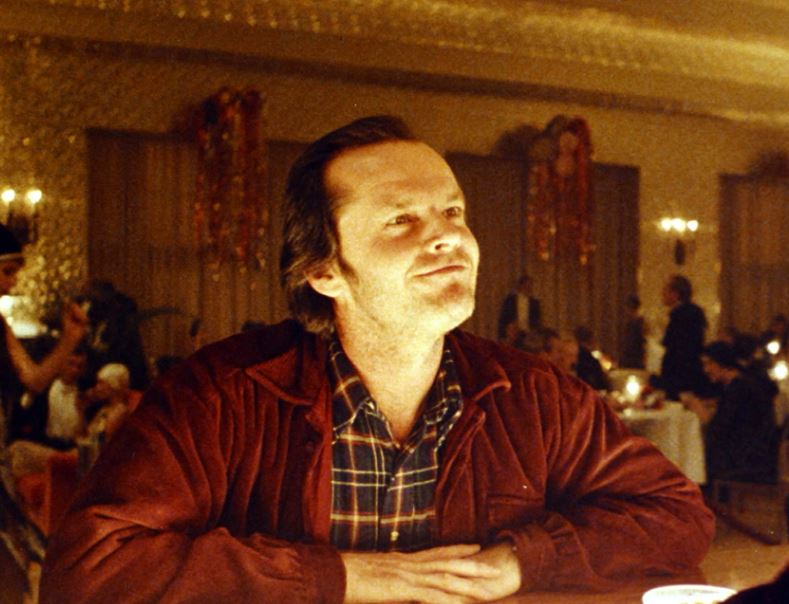
I just realized all your Coca-Cola must still have cocaine in it!
a) Consider this exchange between Jack and Lloyd in the Gold Room:
Jack offers a bill to Lloyd
Lloyd
No charge to you, Mr. Torrence.
Jack
No charge?
Lloyd
Your money’s no good here…. Orders of the House.
Before this Jack asked for credit.
Jack
Say Lloyd, seems I’m temporarily light. How’s my credit in this place?
Lloyd
Your credit’s fine.
Easy credit combined with a watery fiat currency result in debt, debt, debt. You bet your ass his money wasn’t any good there, because ‘there’ was the 1920s, when the dollar hadn’t been drained and air-dried to the fly shit it is today.
b) The Scrapbook on Jack’s writing table is filled with clippings about the forming of the Fed. This takes some high-tech zoomery and perhaps a consultation with the Kubrick Archives in London, but sure at cat-shit that scrapbook has one thing on its mind.
c) The mysterious photo at the end of the film showing Jack at a 4th of July ball in 1921. Kubrick stated that “Every face around Jack is an archetype of the period.” Whose face? OH, how about Benjamin Strong Jr., the first President of the Fed, he’s three inches northwest of Jack’s right shoulder, and hovering directly over his left shoulder is Margaret Wilson, Woodrow Wilson’s daughter, and two heads behind Jack’s is Eleanor Wilson MacAdoo, Woodrow’s other daughter.
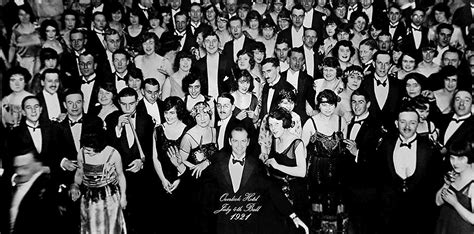
Also pictured, E.F Hutton, ‘Flapper Queen’ Edna Doocy and most people think that’s Honus Wagner feeling up Portia Roosevelt, but one can’t be sure..
This insight is entirely Rob Ager’s and if you want a thirty-minute analysis boner check out his original take here
These four are what I believe to be the intention of Stanley Kubrick, if it will add to your enjoyment of the film, I can’t say, but I would be remiss if you didn’t get a dose of the culture around this movie, namely, people see shit then see more shit, then backtrack and change the shit they saw into some different shit. The discombobulation was quite intentional as one, no matter how hard they try, cannot fuck up so elegantly.
And it’s the reason you’ll keep hearing about this film forever…
…and ever…
…and ever…